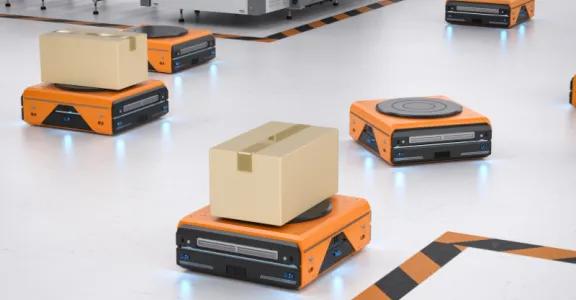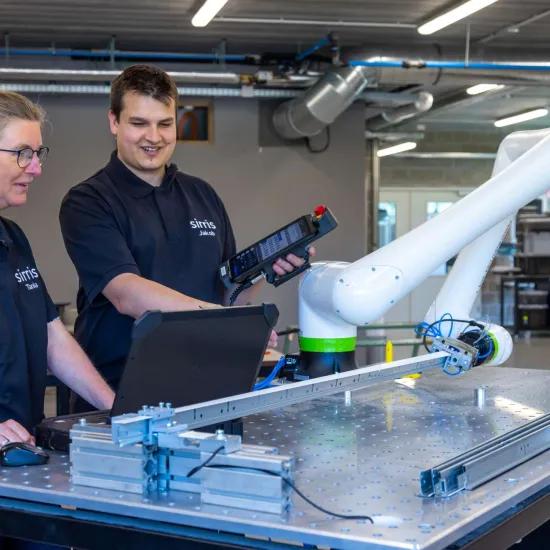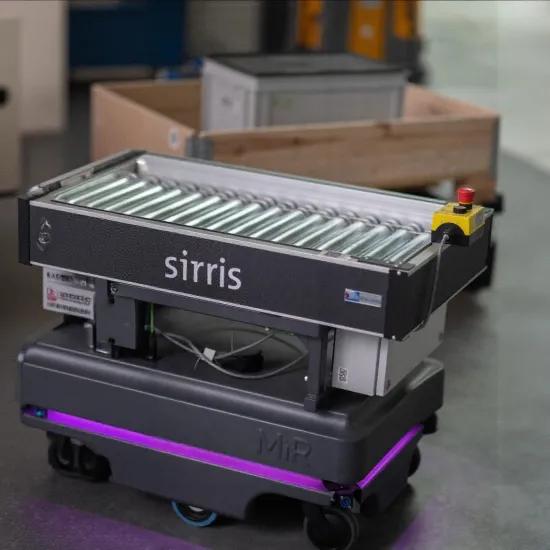While AGVs and AMRs can bring significant benefits in terms of efficiency and productivity, they also introduce new safety risks that must be addressed. In a series of blogs, we will explore AGV safety from multiple angles. The first blog will focus on the legislative framework.
Automated guided vehicles (AGVs) and autonomous mobile robots (AMRs) are becoming increasingly common in manufacturing, warehousing, and logistics operations. While these vehicles can bring significant benefits in terms of efficiency and productivity, they also introduce new safety risks that must be addressed. In a series of blogs, we will explore AGV safety from multiple angles, including the legislative framework that governs it, the road toward safety in terms of best practices, and the stakeholders involved and their respective responsibilities. Our comprehensive exploration of AGV safety will provide valuable insights into the challenges and opportunities associated with this rapidly developing field.
Terminology
The ISO 5053-1:2020 standard is crucial for establishing precise definitions of various types of industrial trucks, including AGVs and AMRs. This standard ensures that all stakeholders, from manufacturers to end-users, have a common understanding of these terms, which aids in applying the correct safety standards and properly assigning liability in the event of an accident or malfunction.
Accordingly with ISO 5350-1: 2020 :
“a driverless truck is a powered truck including any trailers, designed to travel automatically in which the safety of operation does not depend on an operator”
As you can see, the term safety is very relevant when it comes to define a driverless truck.
Legislative framework
Note : On 29 June 2023, the new European Machinery Regulation (2023/1230) was published, replacing the Machinery Directive (2006/42/EC) and coming into force on 20 January 2027.
The regulatory framework for AGV and AMR systems begins with the workplace directive, which establishes legal obligations for employers to ensure the safe use of products in the workplace. The Machinery Directive 2006/42/CE specifically governs the safe use of AGVs and AMRs, and requires manufacturers of machines or facilities to conduct risk assessments in accordance with the EN ISO 12100 standard. If necessary, they must take measures to reduce risks for operators. To comply with the Machinery Directive, manufacturers may utilize harmonized standards.
Harmonized standards
A standard is an agreed, repeatable way of doing something. They contain technical specifications or other precise criteria designed to be used consistently as a rule, guideline, or definition and they are developed by interested parties (manufacturers, users, test bodies, occupational health and safety authorities, governments etc.).
A standard becomes “harmonised” when it is published in the Official Journal, which is kind of an official gazette (periodical publication) which can be found online for free (https://eur-lex.europa.eu/oj/direct-access.html.)
Regarding machinery safety, ISO and EN standards are categorised in three types:
- A-Type: Basic safety standards containing basic terminology, principles of design and general aspects that can be applied to all machinery (e.g. EN ISO 12100 for risk assessment)
- B-Type: Group safety standards that address a safety aspect or protective device. They can be used for a wide range of machinery (e.g. EN ISO 13855 for calculating minimum safety distances or EN ISO 14119 for guard interlocking etc.)
- C-Type: Standards that contain the safety requirements for a specific machine or a type of machine. If a C-Type standard exists, it has priority over the A-Type and B-Type standards. Nevertheless, a C-Type standard can refer to B-Type and A-Type standards.
Recently, there was no C-Type standard available for AGVs and similar systems. However, due to the rapid development of emerging technologies in the field of automated vehicles, the ISO 3691-4 standard was released in 2020 to address this gap, with reviewed version published in 2023 and harmonized in 2024. This standard has replaced the EN 1525:1997 and refers to other common standards, such as ISO 12100, ISO 13849, and ISO 13850. It is now considered the primary international standard for AGVs and AMRs. The ISO 3691-4 outlines three critical aspects of AGV/AMR safety that must be considered for safe operation, including defining the different zones in which the truck operates and interacts with humans, identifying associated hazards and risks, and ensuring proper implementation of safety systems. A figure is provided to illustrate these aspects.
ISO 3691-4
ISO 3691-4 standard has been expanded with the introduction of EN 1175:2020, which focuses on the specific electrical aspects and automated functions of both AGV/AMR and manned industrial vehicles. However, it should be noted that due to the integration of AGVs and AMRs into existing systems, compliance with a single C-Type standard may not fully meet the Essential Health and Safety Requirements (EHSR) of the Machinery Directive. For this reason, some forty A and B-Type standards are referenced as supporting documents to ensure full conformity.
To conclude the first blog in this series, it is evident that the legislative framework plays a crucial role in ensuring the safe deployment and operation of AGVs/AMRs. Compliance with these regulations is not only a legal obligation, but also a moral responsibility to protect the health and safety of workers, as well as the public.
In the next blog post, we will delve into the best practices that organizations can implement to enhance AGV safety.
As a company, how can you assess how to sensibly deploy AGVs or AMRs, and what are the steps involved in such a process? Contact us!
This blog post has been published in the context of the Standards Cell Industry 4.0 and the FlexIn²Log project, which aims to support manufacturing companies and their logistics and ICT partners to use digital technologies and platforms, and digitally driven AMRs, to increase the flexibility and efficiency of inbound and internal logistics.






